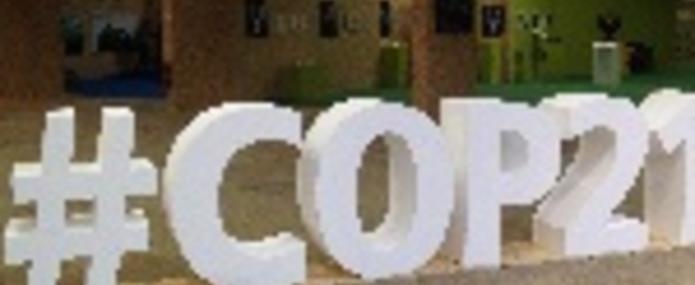These first days of COP21 were rich in announcements and speeches. To mention just a few:
- ‘Mission Innovation’ gathers 20 major countries and aims to accelerate clean energy innovation, in particular to double public R&D investment in this sector by 2020 (currently $10 billion). This is also backed by a private sector investor coalition, the ‘Breakthrough Energy Coalition’ to commercialise promising, transformational technologies.
- ‘Solar Alliance’ gathers more than 100 countries with the aim of helping poor countries with a high solar potential to exploit it, and invest a trillion USD by 2030 in solar.
- Financial pledges coming from Canada to double its climate finance, US$248m from Switzerland, France, Germany, the US, the UK and others to the Least Developed Countries Fund to be prioritized for adaptation. In a joint agreement, Norway, Germany and the UK pledged US$ 5 billion to combat tropical deforestation under REDD+.
- The establishment of a Chinese South-South Climate Cooperation Fund to invest RMB 20 billion (US$ 3 billion) in climate action in developing countries was reiterated by president Xi Jinping.
- A new Fossil Fuel Subsidy Reform Communiqué was also presented, calling for increasing efforts to phase out fossil fuels subsidies.
- The Carbon Pricing Leadership Coalition was formally launched: it includes the World Bank, the IMF, other international organisations including NGOs, many governments (from Europe, Africa, Latin & North America, Central Asia), over 90 companies, to encourage carbon pricing mechanisms.
- The Transformative Carbon Asset Facility was also launched, a $500 million initiative of the World Bank and Germany, Norway, Sweden, and Switzerland to help developing countries to achieve large-scale cuts in their emissions, through working on policy reforms and creating new classes of carbon assets associated with emissions reductions.
- The ‘Anticipate, Absorb, Reshape’ initiative, launched by UN Secretary-General Ban Ki-moon and 13 UN agencies, aims to increase resilience in the most vulnerable countries.
- The Declaration ‘Because the Ocean’ signed by 11 countries aims at improving the scientific and political work of protecting the oceans from climate change.
The above initiatives represent the flagship announcements from the global groundswell of climate action that has been observed in recent years[1] with many actors acting for climate: cities, local authorities, companies, investors, etc. With these alliances, we are seeing the emergence of new coalitions of countries, breaking the usual North/South divide.
But it also raises many questions. How to make sure that all of these commitments actually deliver and do not remain nice wishes? How to track these initiatives? How to bring these initiatives and announcements to a higher level of scale, in order to help countries to accelerate their climate actions? Progress within the negotiations in the first two days of COP21 has not kept pace with these outside announcements. One issue in particular seems to be haunting the negotiations, namely: cooperation and solidarity. How can the Paris Agreement help the poorer countries transition to low-emissions, resilient economies? How to confront climate catastrophes? These were recurring issues in many Heads of State speeches.
The Paris Agreement cannot just be based on INDCs and systems for transparency and regular review. In this case, the INDCs would represent ‘contributions’ to a low-intensity collective response. This kind of agreement would not lead to a sufficient response to climate change, nor would it provide adequate support for the developing countries. The challenge for the remaining week and a half is to develop a common vision of an agreement that goes beyond these bare bones, and includes a comprehensive cooperation agenda.
And yet, at the same time, we can understand the arguments of some countries who say that the UNFCCC is not the place to develop deep, highly technical technology cooperation, or re-engineer the global financial system in order to support low-carbon investment. This is not what it is intended nor equipped to do.
On the other hand, the kind of initiatives described above, if developed and implemented, could form the backbone of a powerful cooperation agenda. They should not be opposed to the international agreement (nor to the UNFCCC); rather they are complementary and both are mutually reinforcing. The political pressure to find agreement in Paris has focused high-level attention on developing these cooperative initiatives.
In order to maximize the impacts of these initiatives and enable their transformational effect, the Paris deal will be key. If the Paris Agreement can be durable and dynamic, this would also encourage these coalitions to grow and to present more ambitious projects, to continue to drive global ambition. If the Paris Agreement can set long-term orientations and targets for technology cooperation and finance, that would further reinforce the political drive to implement and strengthen these cooperative initiatives.
This then is the key to the cooperation issue. The Paris Agreement needs to create the space and pressure for the range of deep, institutionalised and transformational cooperative initiatives that we need. Setting long-term orientations and targets on finance, technology cooperation and resilience, and embedding these in a dynamic agreement, can provide the motor for cooperation. These are only some of the elements needed as part of a framework to follow up on these initiatives and to pursue the “Lima Paris Action Agenda” after COP21. Other important elements will include the coordination and linkage of these initiatives with the negotiations in the years to come, the reporting systems of these initiatives (and avoiding double counting emission reductions), their assessments etc.
We saw the embryo of this with the announcements on Monday; a dynamic and durable Paris Agreement can create a context in which this embryo could hatch into deep cooperation.
[1] The portal to register this climate action, called “NAZCA”, launched last year in Lima, jointly by the French and Peruvian presidencies, has been recording, in just a year, over 10,000 commitments by Non State Actors.



